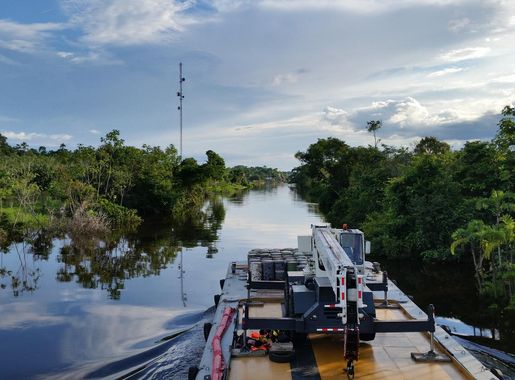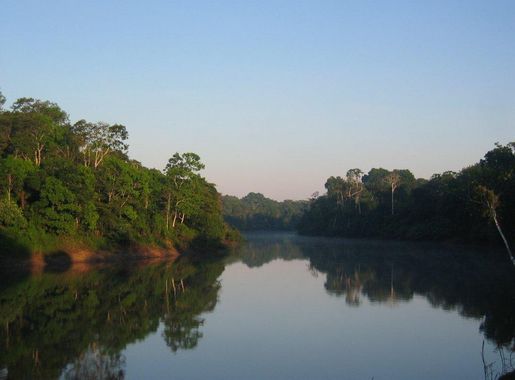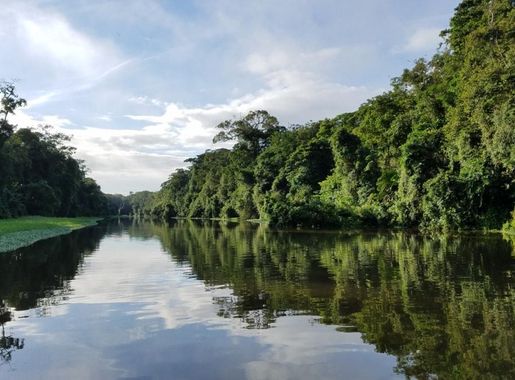
The Enchanting Wilderness of Pacaya-Samiria National Reserve
Discover the rich biodiversity and cultural heritage of Pacaya-Samiria National Reserve, a vast and pristine wilderness in the heart of the Peruvian Amazon.
Nestled in the heart of the Peruvian Amazon, Pacaya-Samiria National Reserve is a vast and untouched paradise. It spans over 20,000 square kilometers, making it one of the largest protected areas in Peru. This reserve is known for its incredible biodiversity, lush rainforests, and winding rivers. It is a haven for wildlife enthusiasts and eco-tourists alike. Visitors to Pacaya-Samiria can explore its dense jungles and tranquil waterways. The reserve is home to a variety of species, including pink river dolphins, manatees, and an array of birdlife. Guided tours offer a chance to witness the beauty of this unique ecosystem up close. The experience is both educational and awe-inspiring, as you learn about the delicate balance of life in the Amazon. Beyond wildlife, Pacaya-Samiria offers a glimpse into the lives of the indigenous communities that call this region home. Many tours include visits to local villages, where you can meet the people and learn about their traditions. This cultural exchange adds a rich layer to the adventure, making it a memorable and meaningful journey.
Local tips in Pacaya-Samiria National Reserve
- Bring insect repellent: The dense jungle is home to many insects, so protection is essential.
- Hire a local guide: They have invaluable knowledge of the area and can enhance your experience.
- Wear lightweight, long-sleeved clothing: This will help protect against insects and sun exposure.
- Stay hydrated: The Amazon can be hot and humid, so drink plenty of water.
- Respect local customs: When visiting indigenous communities, be mindful of their traditions and way of life.
The Enchanting Wilderness of Pacaya-Samiria National Reserve
Nestled in the heart of the Peruvian Amazon, Pacaya-Samiria National Reserve is a vast and untouched paradise. It spans over 20,000 square kilometers, making it one of the largest protected areas in Peru. This reserve is known for its incredible biodiversity, lush rainforests, and winding rivers. It is a haven for wildlife enthusiasts and eco-tourists alike. Visitors to Pacaya-Samiria can explore its dense jungles and tranquil waterways. The reserve is home to a variety of species, including pink river dolphins, manatees, and an array of birdlife. Guided tours offer a chance to witness the beauty of this unique ecosystem up close. The experience is both educational and awe-inspiring, as you learn about the delicate balance of life in the Amazon. Beyond wildlife, Pacaya-Samiria offers a glimpse into the lives of the indigenous communities that call this region home. Many tours include visits to local villages, where you can meet the people and learn about their traditions. This cultural exchange adds a rich layer to the adventure, making it a memorable and meaningful journey.
When is the best time to go to Pacaya-Samiria National Reserve?
Iconic landmarks you can’t miss
Reserva Nacional Pacaya Samiria
Discover the breathtaking biodiversity and stunning landscapes of Reserva Nacional Pacaya Samiria, a must-visit national park in the Peruvian Amazon.
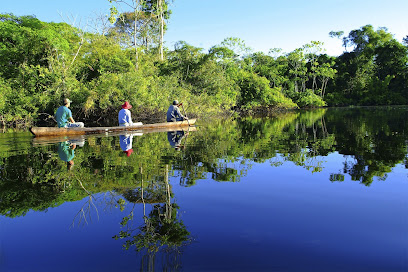
Reserva Nacional Pacaya Simaria
Explore the stunning landscapes and rich biodiversity of Reserva Nacional Pacaya Simaria, a must-visit nature preserve in Peru.

Unmissable attractions to see
Historic Sanctuary of Machu Picchu
Discover the majestic ruins of Machu Picchu, a historical sanctuary offering breathtaking views and a glimpse into Inca civilization.
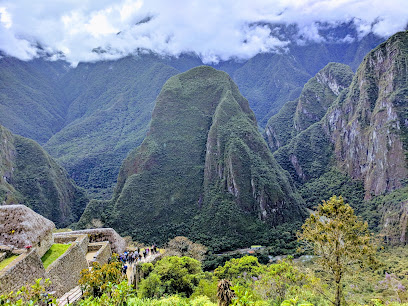
Plaza Moralillos
Discover the natural beauty and vibrant atmosphere of Plaza Moralillos, a tranquil park in the heart of Yurimaguas, Peru, perfect for relaxation and cultural experiences.

National Reserve Allpahuayo-Mishana
Explore the breathtaking biodiversity of Allpahuayo-Mishana National Reserve, a must-visit destination for nature lovers and adventure seekers in the heart of the Amazon.
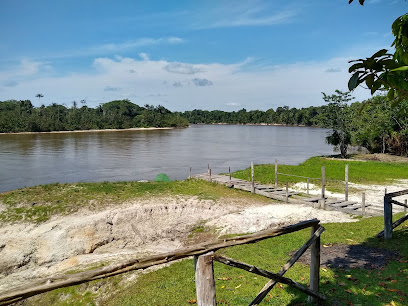
Amazon Experience
Explore the Amazon Experience in Iquitos: A captivating adventure through the lush rainforest, vibrant wildlife, and rich cultural heritage.
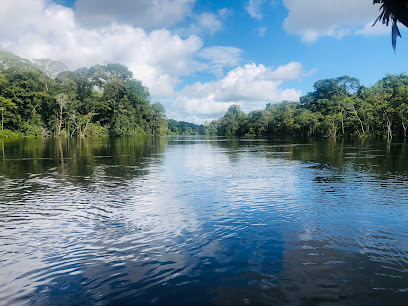
Karibean Tropical Gras Sintético yurimaguas
Experience the enchanting beauty and vibrant culture of Karibean Tropical Gras in Yurimaguas, a tropical paradise in the heart of the Amazon.
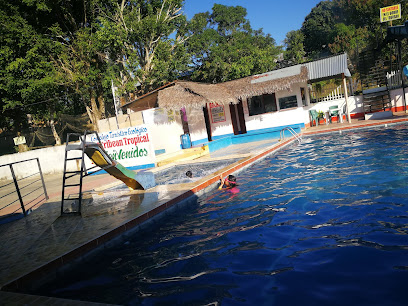
Área de Conservación Regional Comunal Tamshiyacu Tahuayo
Discover the enchanting biodiversity of Áreas de Conservación Regional Comunal Tamshiyacu Tahuayo, a national park that showcases the beauty of Peru's Amazon rainforest.
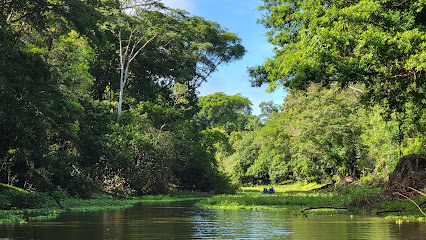
Jungle Reps
Explore the wonders of the Amazon rainforest at Jungle Reps, Iquitos' premier eco-tourism destination that celebrates biodiversity and conservation.
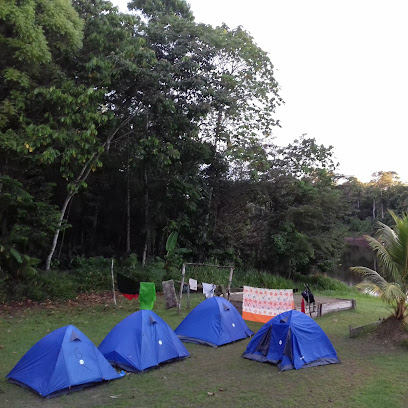
Shelter Posa Gloria
Explore the serene beauty of Shelter Posa Gloria in Lagunas, Peru – a perfect escape for nature lovers and adventure seekers alike.
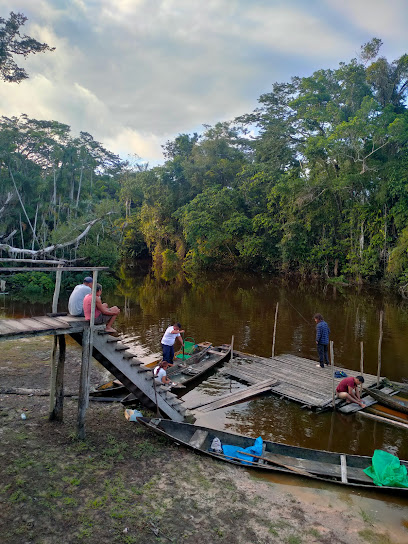
Pacaya Samiria Amazon safary
Discover the Amazon's hidden treasures at Pacaya Samiria Safari, where adventure meets untouched nature in a breathtaking rainforest setting.
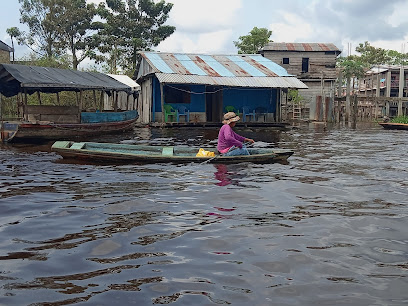
CP Santa Lucia
Discover the vibrant culture and stunning landscapes at CP Santa Lucia, a must-visit tourist attraction in Peru.
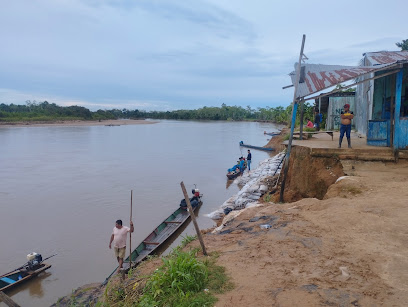
Lago Cuipari
Discover the serene beauty of Lago Cuipari, a hidden paradise in Peru perfect for nature lovers and outdoor enthusiasts seeking tranquility.
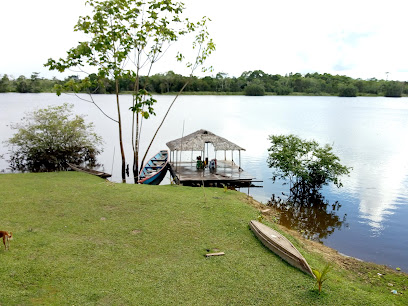
Shelter for travellers
Experience the warmth and hospitality of Lagunas at the Shelter for Travellers, an unforgettable resting spot for adventurers in Peru.
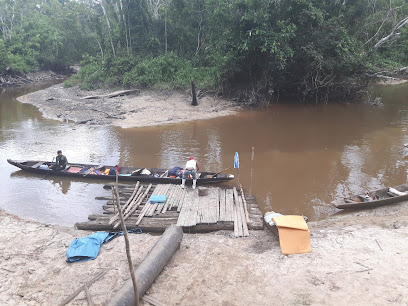
Reserva Nacional Pacaya Samiria - Acatupel Agency
Explore the Amazon's biodiversity at Reserva Nacional Pacaya Samiria, a stunning national reserve teeming with wildlife and rich cultural experiences.
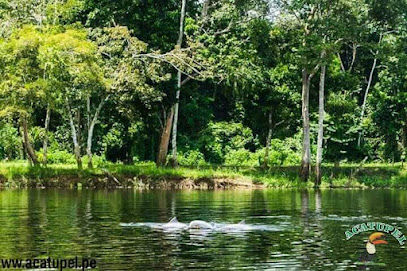
Plaza 28 de Julio
Explore the tranquility of Plaza 28 de Julio, a lush park in Lagunas, Peru, perfect for relaxation, picnics, and immersing in local culture.

Lago Sanango
Explore Lago Sanango, a serene lake in Yurimaguas, Peru, surrounded by lush landscapes and perfect for relaxation and nature exploration.
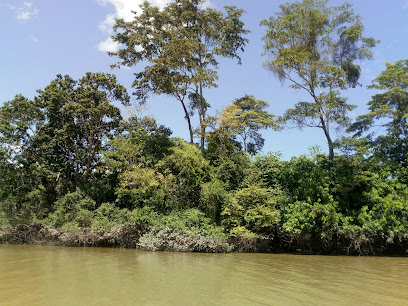
Essential places to dine
Embarcadero Restaurante Al Frío y al Fuego
Experience exquisite Peruvian cuisine with breathtaking river views at Embarcadero Restaurante Al Frío y al Fuego in Iquitos.
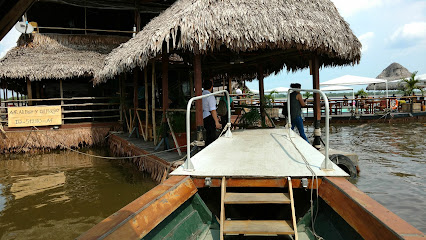
Reserva Nacional Pacaya Samiria
Discover the lush landscapes and vibrant wildlife of Reserva Nacional Pacaya Samiria – a breathtaking national park in Peru's Amazon rainforest.
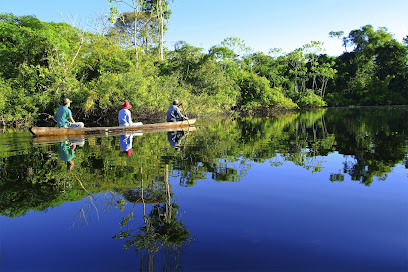
THE YELLOW ROSE OF TEXAS RESTAURANT
Experience an eclectic mix of American, Belgian, Chinese & Russian cuisines at The Yellow Rose of Texas Restaurant in Iquitos.
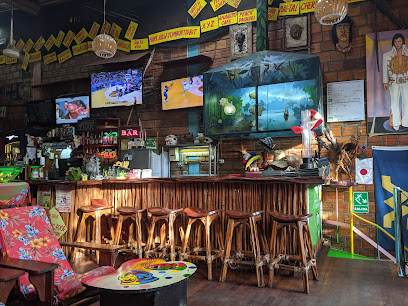
Amazon Bistro
Discover authentic Peruvian cuisine with a twist at Amazon Bistro in Iquitos - where every dish is a celebration of flavor.
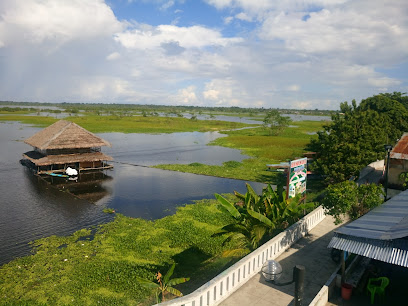
YAKUMAMA RESTOBAR FLOTANTE
Discover exquisite Peruvian cuisine on the tranquil waters of Yakumama Restobar Flotante in Iquitos - a perfect blend of flavor and natural beauty.

Markets, malls and hidden boutiques
Miraflores Indian Market
Experience the lively Miraflores Indian Market, a cultural hub filled with Peruvian art, handicrafts, and delicious local flavors in the heart of Miraflores.
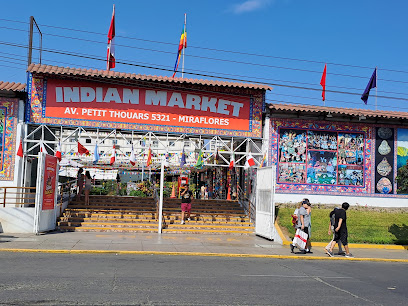
Reserva Nacional Pacaya Samiria
Explore the lush landscapes and diverse wildlife of Reserva Nacional Pacaya Samiria, an Amazonian paradise in Peru, perfect for adventurers and nature lovers.
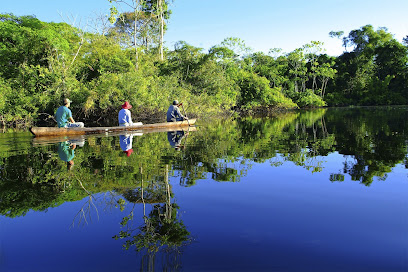
PUERTO La Boca
Discover the vibrant essence of Yurimaguas at Puerto La Boca, a store filled with local crafts, culture, and unique souvenirs.
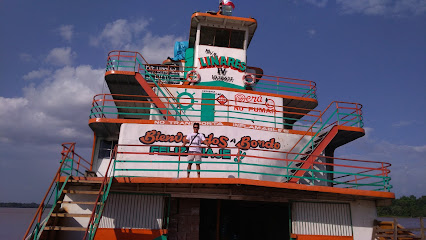
Tour Pacaya Samiria
Discover the Amazon's natural beauty and cultural richness with Tour Pacaya Samiria, your gateway to unforgettable adventures in the Pacaya Samiria National Reserve.
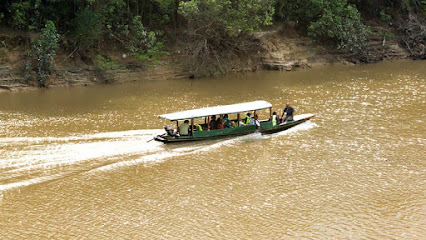
Multiventas Raju Lagunas
Explore the vibrant Multiventas Raju Lagunas for unique local crafts, authentic souvenirs, and a taste of Peruvian culture in the heart of Lagunas.
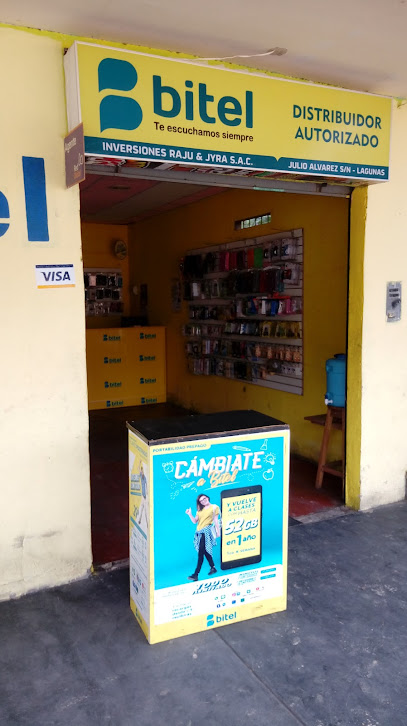
PUERTO La Ramada
Discover the local culture and vibrant offerings at PUERTO La Ramada, a must-visit store in Yurimaguas along the scenic Huallaga River.
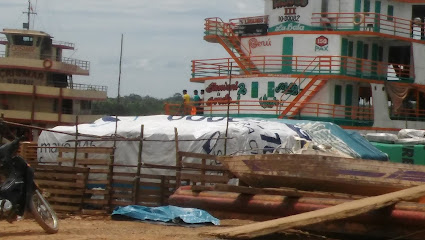
Mercado De Villa Lagunas
Explore the lively Mercado De Villa Lagunas, where local culture meets vibrant shopping in the heart of Lagunas, Peru.

Negocios Andrey “CUNINICO”
Explore the vibrant local culture at Negocios Andrey 'CUNINICO', your essential grocery store in Cuninico, Peru, offering fresh produce and local delicacies.
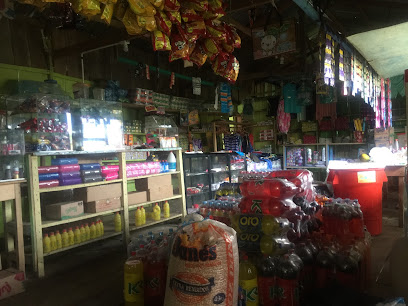
Artewasi - Artesanías
Explore the vibrant craftsmanship of Yurimaguas at Artewasi - Artesanías, where every piece tells a story of tradition and artistry.
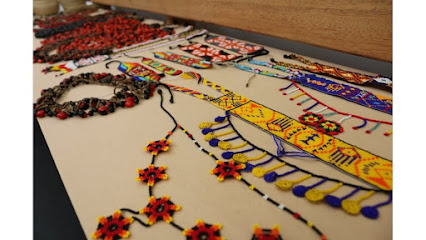
Artemisa Perú
Discover unique Peruvian home goods at Artemisa Perú in Yurimaguas, where local craftsmanship meets modern design.
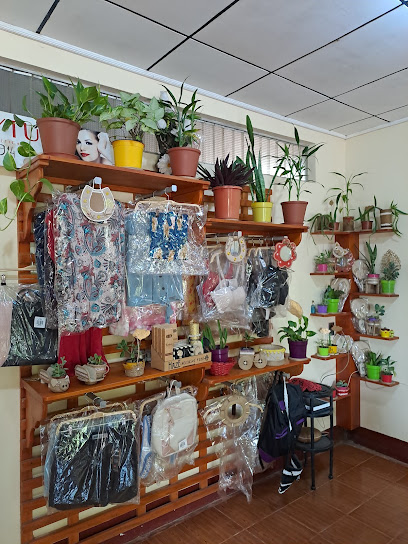
RACHAEL STORE
Explore unique fashion and local craftsmanship at Rachael Store in Yurimaguas, your go-to destination for stylish clothing and authentic souvenirs.
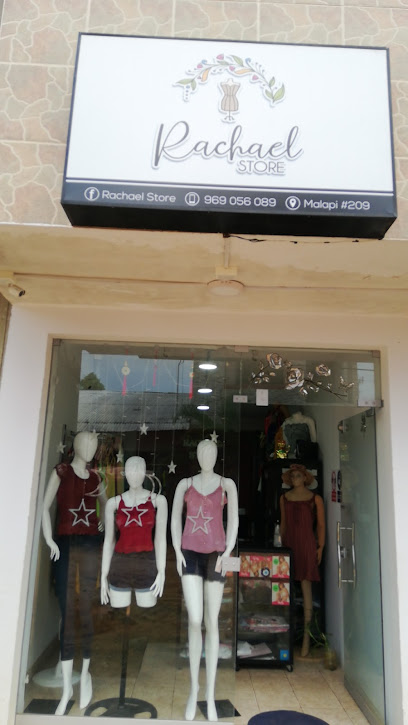
Mini Bazar Müller
Experience the vibrant local culture and flavors at Mini Bazar Müller, a must-visit shopping mall in Lagunas, Peru.
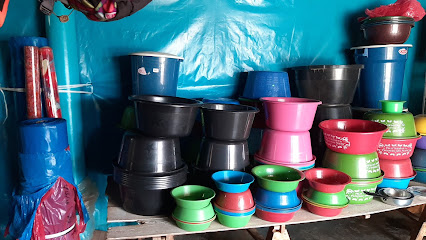
HERMES GROUP
Explore Hermes Group in Lagunas: A unique home goods store showcasing local craftsmanship and culture.

Comercial Luz Marina - HUVIHU
Explore the best of Yanchamayo at Comercial Luz Marina - a vibrant shopping destination for unique finds and local cuisine.
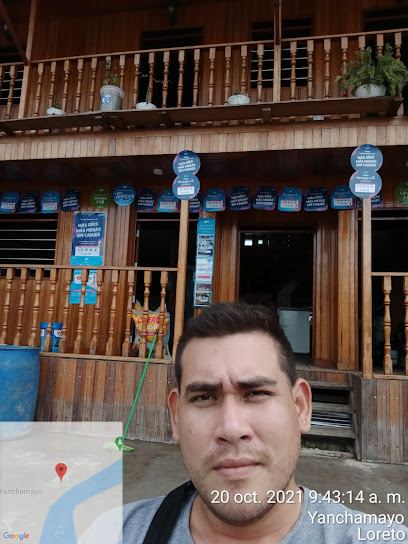
Bodega Rubi
Discover Bodega Rubi, the perfect convenience store in Cuiparillo for snacks, essentials, and local flavors.
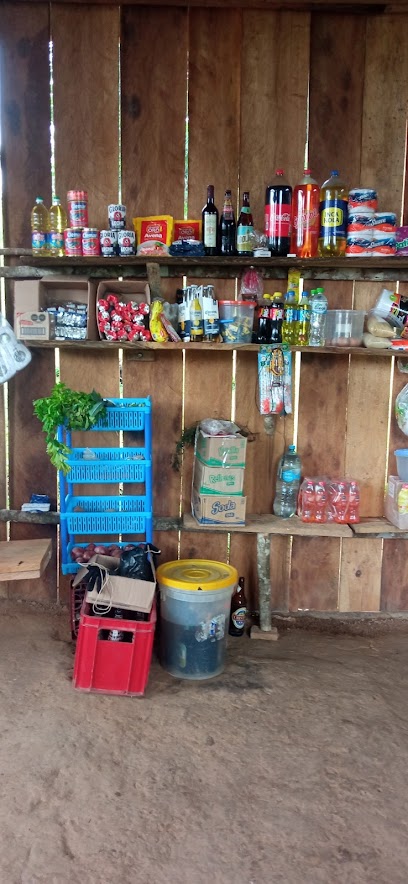
Essential bars & hidden hideouts
Restaurant La Gata
Discover the authentic flavors of Peru at Restaurant La Gata in Lagunas, where delightful cuisine meets a warm and inviting atmosphere.
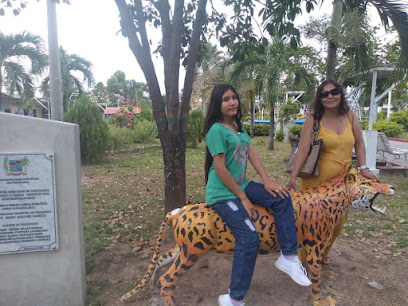
Picaflor 2
Experience the vibrant nightlife of Yurimaguas at Picaflor 2, the perfect bar for relaxation and socializing.

Polleria Divino Niño
Experience the authentic taste of Peru at Polleria Divino Niño, where succulent rotisserie chicken and local flavors come together in a vibrant setting.

Restaurant El Vecino
Discover authentic Peruvian cuisine at Restaurant El Vecino, a charming eatery in Pueb Lagunas that celebrates local flavors and culture.
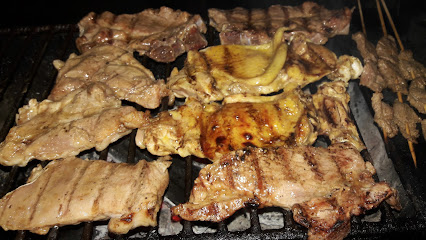
Antojitos Gladys
Experience authentic Peruvian cuisine at Antojitos Gladys in Lagunas, where traditional flavors and a welcoming atmosphere await you.
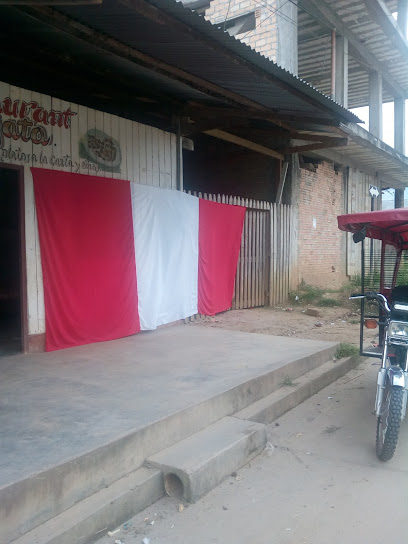
Bohemia's Restobar
Enjoy a vibrant culinary experience at Bohemia's Restobar, offering delicious grilled Peruvian dishes in La Ramada's lively atmosphere.

Antojitos
Discover the heart of Peruvian cuisine at Antojitos, where every dish tells a story of tradition and flavor in Lagunas.
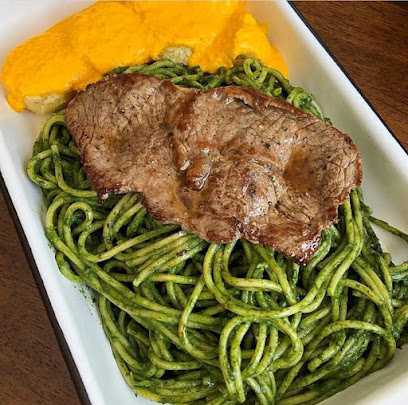
Bar Discoteca Emocion
Discover the energetic nightlife of Lagunas at Bar Discoteca Emocion, where great music and vibrant dance await every visitor.
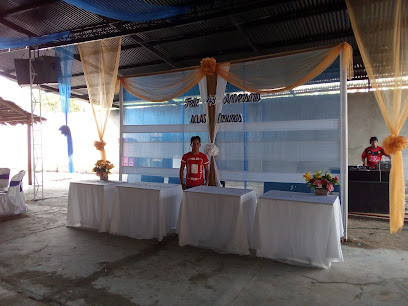
Restobar Zona Sismica
Discover the vibrant nightlife at Restobar Zona Sismica in Yurimaguas, where drinks, music, and local culture come together for an unforgettable experience.

Restaurant brostheria las tres regiones
Experience the authentic flavors of Peru at Restaurant Brostheria Las Tres Regiones in Lagunas, where tradition meets taste in every dish.
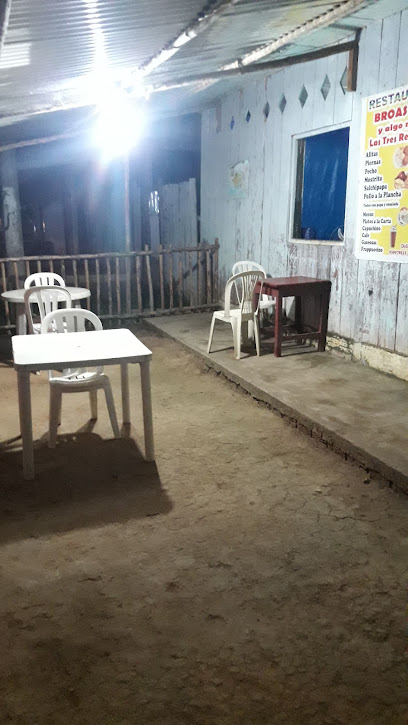
Urcututu Disco Bar
Discover the energetic nightlife of Urcututu Disco Bar in Lagunas, Peru, where music, drinks, and new friends await for an unforgettable experience.
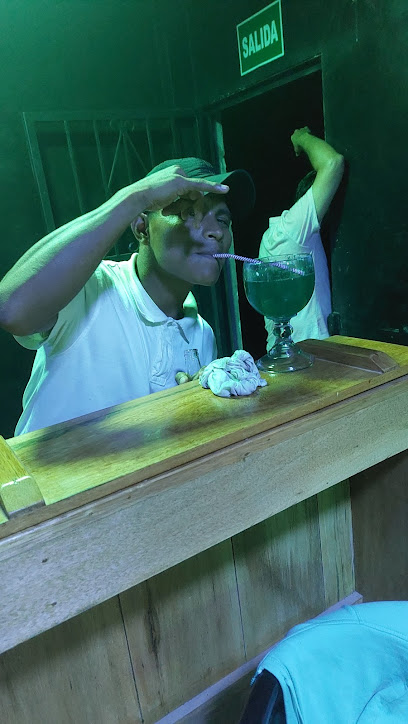
CEVICHERIA VIOBAVE
Experience the vibrant flavors of Peru at Cevicheria Viobave, the ultimate destination for fresh ceviche in Lagunas.
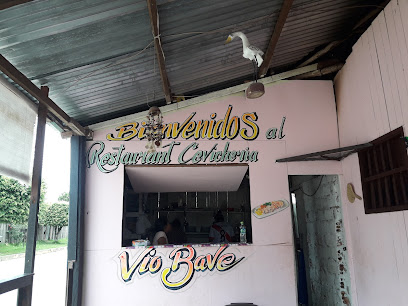
Bar las Amazonas
Discover the vibrant nightlife at Bar las Amazonas in Pampa Hermosa, where exquisite drinks and a welcoming atmosphere await all visitors.
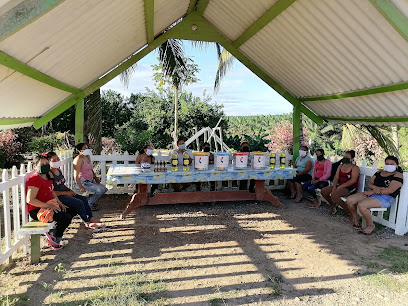
Mistika Restobar
Experience the vibrant flavors of Yurimaguas at Mistika Restobar, a gastropub blending local tradition with culinary innovation.

AA.HH virgen de guadalupe
Discover the lively charm of AA.HH Virgen de Guadalupe, a vibrant girl bar in Peru perfect for an unforgettable night out.

Local Phrases about Pacaya-Samiria National Reserve
-
- Hello¡Hola!
[O-lah] - Goodbye¡Adiós!
[Ah-dee-ohs] - YesSí
[See] - NoNo
[Noh] - Please/You're welcomePor favor/De nada
[Por fah-vor/Deh nah-dah] - Thank youGracias
[Grah-see-ahs] - Excuse me/SorryPerdón/Lo siento
[Pair-dohn/Loh see-en-toh] - How are you?¿Cómo estás?
[Koh-moh ehs-tahs] - Fine. And you?Bien. ¿Y tú?
[Byen. Ee too] - Do you speak English?¿Hablas inglés?
[Ah-blahs een-glays] - I don't understandNo entiendo
[Noh ehn-tee-ehn-doh]
- Hello¡Hola!
-
- I'd like to see the menu, pleaseMe gustaría ver el menú, por favor
[May goo-stah-ree-ah ver el meh-noo, poor fah-vor] - I don't eat meatNo como carne
[Noh koh-moh kahr-neh] - Cheers!¡Salud!
[Sah-lood] - I would like to pay, pleaseMe gustaría pagar, por favor
[May goo-stah-ree-ah pah-gar, poor fah-vor]
- I'd like to see the menu, pleaseMe gustaría ver el menú, por favor
-
- Help!¡Ayuda!
[Ah-yoo-dah] - Go away!¡Vete!
[Veh-teh] - Call the Police!¡Llama a la Policía!
[Yah-mah ah lah Poh-lee-see-ah] - Call a doctor!¡Llama a un médico!
[Yah-mah ah oon may-dee-koh] - I'm lostEstoy perdido/a
[Ehs-toy pair-dee-doh/dah] - I'm illEstoy enfermo/a
[Ehs-toy ehn-fehr-moh/dah]
- Help!¡Ayuda!
-
- I'd like to buy...Me gustaría comprar...
[May goo-stah-ree-ah kohm-prar] - I'm just lookingSolo estoy mirando
[Soh-loh ehs-toy mee-rahn-doh] - How much is it?¿Cuánto cuesta?
[Kwan-toh kwehs-tah] - That's too expensiveEso es demasiado caro
[Eh-soh ehs deh-mah-see-ah-doh kah-roh] - Can you lower the price?¿Puedes bajar el precio?
[Pweh-dehs bah-har el pree-syoh]
- I'd like to buy...Me gustaría comprar...
-
- What time is it?¿Qué hora es?
[Keh oh-rah ehs] - It's one o'clockEs la una en punto
[Ehs lah oo-nah ehn poon-toh] - Half past (10)Las diez y media
[Lahs dyehs ee meh-dee-ah] - MorningMañana
[Mah-nyah-nah] - AfternoonTarde
[Tahr-deh] - EveningNoche
[Noh-cheh] - YesterdayAyer
[Ah-yehr] - TodayHoy
[Oy] - TomorrowMañana
[Mah-nyah-nah] - 1Uno
[Oo-noh] - 2Dos
[Dohs] - 3Tres
[Tres] - 4Cuatro
[Kwah-troh] - 5Cinco
[Seenkoh] - 6Seis
[Sehs] - 7Siete
[Syeh-teh] - 8Ocho
[Oh-choh] - 9Nueve
[Nweh-veh] - 10Diez
[Dyehs]
- What time is it?¿Qué hora es?
-
- Where's a/the...?¿Dónde está el/la...?
[Dohn-deh ehs-tah ehl/lah] - What's the address?¿Cuál es la dirección?
[Kwahl ehs lah dee-rehk-syohn] - Can you show me (on the map)?¿Puedes mostrarme (en el mapa)?
[Pweh-dehs mohs-trar-meh (ehn el mah-pah)] - When's the next (bus)?¿Cuándo es el próximo (autobús)?
[Kwan-doh ehs ehl proh-ksee-moh (ow-toh-boos)] - A ticket (to ....)Un boleto (a ...)
[Oon boh-leh-toh (ah ...)]
- Where's a/the...?¿Dónde está el/la...?
History of Pacaya-Samiria National Reserve
-
Long before the area became a designated national reserve, it was inhabited by various indigenous groups, including the Cocama-Cocamilla people. These groups lived in harmony with the Amazon rainforest, relying on its rich resources for sustenance and cultural practices. Their deep knowledge of the land and waterways contributed significantly to the biodiversity we see today in the reserve.
-
In the 16th century, the arrival of European explorers marked a significant turning point for the region. Spanish explorers were among the first to navigate the complex waterways of the Amazon basin. Their interactions with indigenous communities were often tense and led to dramatic changes in the local way of life. The written records left by these explorers provide valuable historical insights into the early days of European contact with the Amazon.
-
During the late 19th and early 20th centuries, the Amazon experienced a rubber boom that had a profound impact on the region, including what is now the Pacaya-Samiria National Reserve. Rubber barons exploited the land and indigenous labor, leading to significant changes in the local ecosystems and demographics. This era left an indelible mark on the history and culture of the area.
-
The Pacaya-Samiria National Reserve was officially established in 1982 by the Peruvian government. Recognized for its unparalleled biodiversity, the reserve was created to protect the unique flora and fauna, as well as to preserve the traditional lifestyles of the indigenous communities. Covering over 20,000 square kilometers, it is one of the largest protected areas in Peru and a vital part of the Amazon's ecological network.
-
In recent decades, there have been significant efforts to conserve the natural and cultural heritage of Pacaya-Samiria. Various NGOs and governmental organizations have collaborated on projects aimed at sustainable development, wildlife protection, and community engagement. These initiatives have helped to bolster the ecological health of the reserve while providing economic opportunities for local residents.
-
Despite its protected status, Pacaya-Samiria faces ongoing challenges such as illegal logging, poaching, and climate change. These threats necessitate continuous vigilance and adaptive management strategies. The reserve's history is a testament to the resilience of both its ecosystems and the people who call it home, underscoring the importance of ongoing conservation efforts.
Pacaya-Samiria National Reserve Essentials
-
Pacaya-Samiria National Reserve is located in the Loreto Region of Peru, deep in the Amazon rainforest. The nearest major city is Iquitos, which does not have road access and can only be reached by air or river. From Iquitos, you can take a domestic flight from Lima, the capital of Peru. Once in Iquitos, you can arrange for a riverboat or speedboat to take you to the reserve. The journey typically takes several hours depending on the type of boat and river conditions.
-
Within Pacaya-Samiria, transportation is primarily by boat due to its vast network of rivers and flooded forests. Local guides and tour operators provide transportation via motorized canoes, speedboats, and larger riverboats. It is advisable to book your transportation in advance through a reputable tour company. In Iquitos, mototaxis and taxis are commonly used for short trips, while riverboats are used for longer journeys.
-
The official currency in Peru is the Peruvian Sol (PEN). Credit cards are accepted in Iquitos in some hotels, restaurants, and shops, but it is advisable to carry cash, especially when traveling to rural areas and within the reserve. ATMs are available in Iquitos, but it is wise to withdraw sufficient cash before heading into the reserve as there are no banking facilities within the Pacaya-Samiria National Reserve.
-
Pacaya-Samiria National Reserve is generally safe for tourists, but standard precautions should be taken. Avoid traveling alone, especially at night. Keep an eye on your belongings and avoid displaying valuable items. While Iquitos is relatively safe, certain neighborhoods such as Belén have higher crime rates and should be avoided after dark. Always follow the advice of your local guide and stay within designated tourist areas.
-
In case of an emergency, contact your tour guide or the nearest lodge staff immediately. They can arrange for transportation to the nearest medical facility in Iquitos. It is highly recommended to have travel insurance that covers medical emergencies and evacuation. For urgent situations, the emergency number in Peru is 105 for the police and 116 for medical emergencies. Make sure to carry a basic first-aid kit and any personal medications.
-
Fashion: Do wear lightweight, long-sleeved clothing to protect against insects and sun exposure. Avoid wearing bright colors that can attract insects. Religion: Do respect local customs and traditions. While the reserve is not a religious site, locals may follow traditional beliefs. Public Transport: Do be respectful and patient. River travel can be slow and schedules may change. Greetings: Do greet locals with a friendly 'Hola' or 'Buenos días'. A handshake is also appropriate. Eating & Drinking: Do try local dishes and drink bottled or purified water. Don’t drink tap water or eat unpeeled fruits without washing them first.
-
To experience Pacaya-Samiria like a local, hire a knowledgeable local guide who can offer insights into the flora, fauna, and indigenous cultures. Participate in community-based tourism activities to learn about traditional fishing, crafting, and medicinal plants. Visit during the dry season (May to October) for better wildlife viewing opportunities. Always respect the natural environment and local communities by practicing sustainable tourism.
Nearby Cities to Pacaya-Samiria National Reserve
-
Things To Do in Loja
-
Things To Do in Macas
-
Things To Do in Cuenca
-
Things To Do in Trujillo
-
Things To Do in Chiclayo
-
Things To Do in Huaraz
-
Things To Do in Tena
-
Things To Do in Ambato
-
Things To Do in Piura
-
Things To Do in Guayaquil
-
Things To Do in Quito
-
Things To Do in Mindo
-
Things To Do in Otavalo
-
Things To Do in Ibarra
-
Things To Do in Salinas

